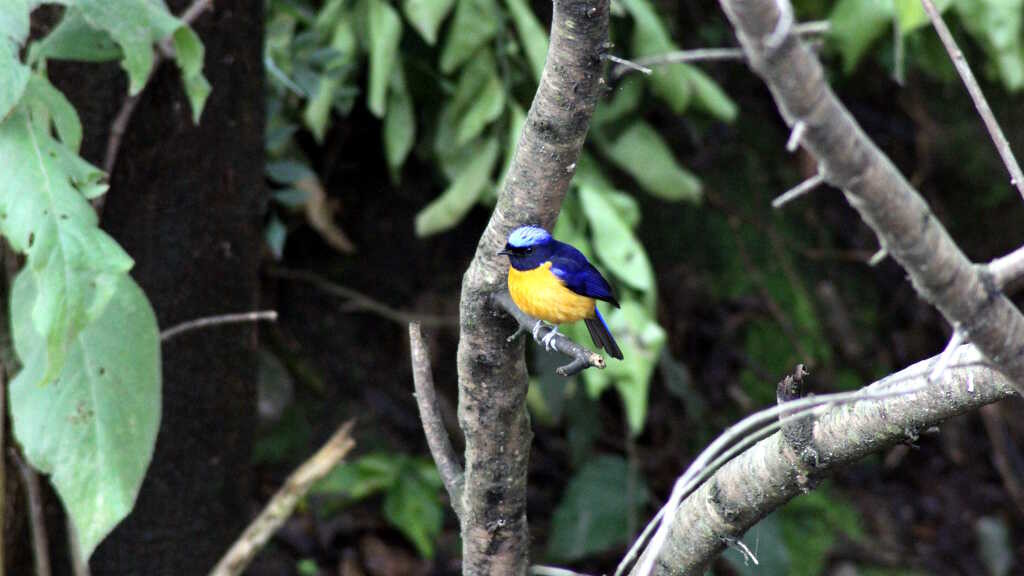
Niltava sundara (Rufous-bellied niltava)
The Rufous-bellied niltava (Niltava sundara) is a vibrant and elusive forest bird that graces the shaded undergrowth of the Great Himalayan National Park (GHNP). This striking member of the flycatcher family is a prized sighting for birdwatchers exploring the mid to high-altitude forests of the western Himalayas.
Appearance and Identification
The male Rufous-bellied niltava is a stunning mix of deep blue upperparts and a rich, rufous-orange belly, with a striking contrast that makes it visually unforgettable. Females, while more subdued, exhibit beautiful earthy browns with subtle rufous shading on their undersides. Their strong bills and upright perching habits are characteristic of their flycatcher lineage.
Habitat and Behavior
In the GHNP, the Rufous-bellied niltava is typically found between 1,800 and 3,000 meters above sea level, preferring dense forests with plenty of foliage. These birds are most active in the early morning and late afternoon, foraging for insects and small arthropods. Their rich, melodious song can be heard echoing through the forest, especially during the breeding season.
Despite their vivid appearance, they are often shy and remain hidden in the underbrush or low canopy. They exhibit strong site fidelity and often return to the same nesting territories year after year.
| Common name | Rufous- bellied Niltava |
| Scientific name | Niltava sundara |
| Family | Muscicapinae (Flycatchers, Niltava) |
| Description | A small size bird, male has brilliant blue crown and neck patch and orange on underparts extending to vent. Female and juvenile have oval- shaped throat patch .It is a resident bird in Himalaya and also migrated in winter season from higher to lower altitude |
Ecological Role and Conservation
The Rufous-bellied niltava plays a vital role in insect population control, making it an important part of the forest ecosystem in GHNP. Although currently listed as Least Concern on the IUCN Red List, ongoing habitat protection in GHNP is crucial to safeguarding its future, especially with rising threats from deforestation and human encroachment.



